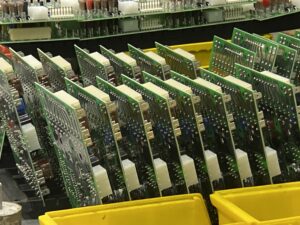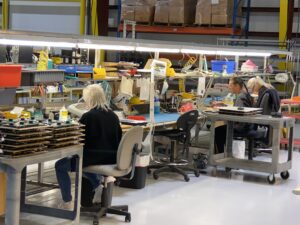Understanding Box Builds and Panelization in Electronics Manufacturing
Electronics manufacturing involves several intricate processes that ensure the creation of reliable and high-quality products. Two crucial aspects of this process are box builds and panelization. While they serve different purposes, both are essential for efficient manufacturing and assembly. This blog delves into the concepts, benefits, and best practices associated with box builds and panelization.
Box Builds: An Overview
Box builds, also known as systems integration, involve the assembly of various electronic components into a final product enclosure. This process goes beyond just creating a printed circuit board (PCB); it includes everything from installing PCBs into their housings to integrating cables, wire harnesses, sub-assemblies, and even software.
Key Components of Box Builds

PCBs: The core of any electronic product, where the electronic circuits are etched.
Enclosures: The outer casing that houses the PCB and other components, often providing protection and structural support.
Cables and Wire Harnesses: Connect various internal components, enabling communication and power distribution.
Sub-Assemblies: Pre-assembled units that are integrated into the final product.
Software: Embedded software that controls the functionality of the product.
Best Practices for Box Builds
Detailed Documentation: Comprehensive documentation, including schematics, assembly instructions, and BOM (Bill of Materials), is crucial for ensuring consistency and quality.
Thorough Testing: Conducting rigorous testing at each stage of the assembly process helps identify and rectify issues early, ensuring the final product’s reliability.
Efficient Supply Chain Management: Timely procurement of components and materials is essential to avoid delays in the assembly process.
Quality Control: Implementing stringent quality control measures, including inspections and audits, ensures that each product meets the required standards.
Panelization: An Overview

Panelization is a manufacturing technique where multiple PCBs are fabricated together as a single panel, which is then divided into individual boards after assembly. This method is particularly useful for producing small or complex PCBs, improving manufacturing efficiency and reducing costs.
Benefits of Panelization
Efficiency: Panelization allows for the simultaneous production and assembly of multiple PCBs, significantly increasing throughput.
Cost-Effective: By reducing handling and setup times, panelization lowers manufacturing costs.
Consistency: Producing PCBs in panels ensures uniformity and reduces the likelihood of defects.
Ease of Handling: Panels are easier to handle during the assembly process, reducing the risk of damage to individual PCBs.
Best Practices for Panelization
Design Optimization: Optimize the layout of the PCBs on the panel to maximize space utilization and minimize waste.
V-Scoring and Tab Routing: Use V-scoring and tab routing techniques to facilitate easy separation of individual PCBs from the panel.
Tooling Holes and Fiducials: Incorporate tooling holes and fiducials in the panel design to ensure precise alignment and registration during assembly.
Stress Analysis: Perform stress analysis to identify potential weak points and ensure that the panel can withstand the manufacturing process without damage.
Integrating Box Builds and Panelization
Combining box builds and panelization can lead to a highly efficient and streamlined manufacturing process. Here’s how:
Concurrent Assembly: By panelizing PCBs, manufacturers can assemble multiple boards simultaneously, which can then be integrated into the box build process, reducing overall production time.
Reduced Handling: Panelization minimizes handling, reducing the risk of damage to individual PCBs. This is particularly beneficial during the box build process, where multiple components are integrated.
Improved Quality Control: Panelization and box builds together allow for more consistent and thorough testing at various stages, ensuring higher product quality.
Conclusion
Box builds and panelization are integral parts of the electronics manufacturing process, each contributing to efficiency, cost-effectiveness, and quality. By understanding and implementing best practices for both, manufacturers can enhance their production capabilities, meet customer demands more effectively, and stay competitive in a rapidly evolving market. Whether it’s the meticulous integration of components in box builds or the efficient fabrication of PCBs through panelization, mastering these processes is key to achieving excellence in electronics manufacturing.
